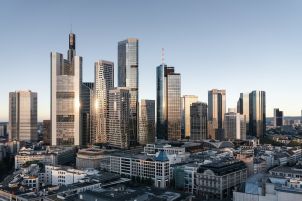Interview with Thierry Bonniol, Director of Retail France
Retail is changing in a number of ways, driven by the new interactions clients are seeking with the sector. It is now the case that clients are looking for new tailor made experiences and to have much greater affinity with a brand. This could be by receiving products personally adapted to them or given offers which represent their interests and previous interactions with a brand. Brands, shopping centres and restaurants are all responding to this growing change and creating a new relationship between themselves and their clients.
It is undeniable that our interactions with internet shopping and social media are a key driver for the changes we are seeing in the retail sector, since 2017 e-commerce has grown by 14%. With instant access through social media networks to influencers and bloggers who tout a variety of brands, providing instant buzz, people are quick to convert a brand. This is a relatively new concept and as such retailers are working to create a community of clients that are able to interact with each other and create an experience related to the brand. As an example of this, the gym Sport with Reebok has recently created a centre that combines different sectors; events, conferences, expositions and dining, bringing together their clients and encouraging them to interact with each other and experience the Reebok brand in a very different way. Rather than simply going into a Reebok shop and buying their product, Reebok is tapping into the various interests of their clients and engaging them through various aspects of their life, not only the need to exercise or buy Reebok clothes. This idea of developing events and subsequently creating communities is something which both Nike and Adidas are also working on.
In the restaurant business, as people’s schedules change, moving away from the traditional 9-5 routine and being far more on the go, a new dining experience is being sought. People now want access to food that is delivered quickly, but rather than the traditional fast food, customers are looking for high quality products that deliver a standard seen in restaurants. Many companies are responding to this, changing the model of how we order and consume ‘fast’ food. As such, the restaurant business has seen a huge growth spurt over the last four years (+ 6% in Q4 2017 vs. + 4% for retail sales as a whole), with new concept stores such as Exki, Picto and Cojean adapting to this, while those who remain with a more traditional approach find themselves in greater difficulty.


Retail is changing in a number of ways, driven by the new interactions clients are seeking with the sector. It is now the case that clients are looking for new tailor made experiences and to have much greater affinity with a brand.
The impact of the internet on retail
Whilst you may think that with the growing use of internet shopping, our high-streets would be affected, this is however not the case. It is true that because of competing for client’s attention, brands are quick to give up a shop on a high street, rather than in the past, fighting to keep it in place. However, it cannot be underestimated how important having both a well-functioning website and shop in place is. Clothes shopping is a prime example of this. A client who buys something online is encouraged with free delivery to pick their item up in store, where they will have to go through the shop to be able to retrieve it. This means passing through the shop and seeing other products which incite potential new purchases. In other examples, shops which function as purely online stores will very often still pay for showrooms in a number of cities, allowing their customers to physically see and test their products.
It may seem that this makes the sales in a shop less important, but retailers still very much consider sales in store important to their overall success. This is also why shopping centres continue to be developed but in a slightly different way. Now we have shopping centres that are being re-structured and renovated, to create an innovative place that has restaurants, with attractive architecture and connections with nature. Yes, clients want to buy affordable products when they go to a shopping centre, but they want to do this in an inviting, visually pleasing environment.
Interview with Cyril Zaprilla, Head of Capital Market Retail
Retail has always been a place where people are able to meet up and interact with each other. It is first and foremost somewhere that responds to the needs of consumers, and especially within smaller towns, we need retail to cater to a need to meet up. It is for that reason that we have a resurgence of new types of retail, particularly food, which have existed for a number of years but are now being renovated for modern taste in order to facilitate this desire to meet up.
Shopping centres have in the past always allowed for this kind of meeting up, but in recent times they have become less attractive for people and so they have sought out spaces which are more convivial and visually appealing. If something in a shopping centre doesn’t function as it should, for example the car park, people are quick to stop going there. It is therefore vital that a shopping centre remains visible and is easily found, with enticing architecture and easy access.
As a result of the impact of the internet and social media, it seems that people have reverted to simple consumption of retail. They no longer accept to be taken as an anonymous consumer but instead want to be seen as clients.


As a result of the impact of the internet and social media, it seems that people have reverted to simple consumption of retail. They no longer accept to be taken as an anonymous consumer but instead want to be seen as clients.
The changing aims of the retailer
How does that change the aims of a retailer? Well, they adapt to the new social climate, where clients are more demanding because of access to social media which allows them to really know a product, and comparison websites which mean they can compare the prices and quality of products. Retailers can therefore no longer present a product that doesn’t fit with the expectations of consumers, so they have adapted their offering. In food for example, we are being delivered high quality products which are targeted carefully at clients rather than mass producing. It’s in the food sector that we find the most diversity and creativity in terms of products at the moment.
Whilst internet shopping is of course a growing trend, it is not going to radically change our high-streets. People still like to have their products immediately, without waiting for lengthy delivery times, so they keep coming back to the classic way of shopping. We cannot forget that going shopping is a pastime that people enjoy, and which simply cannot be recreated online.
Paris Expo Porte de Versailles– Pavillon 4 – 1 Place de la Porte de Versailles – 75015 Paris - 6 - 7th Junes 2018




